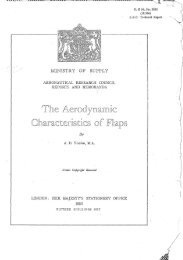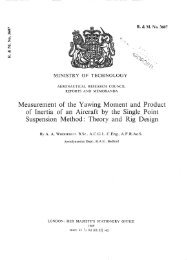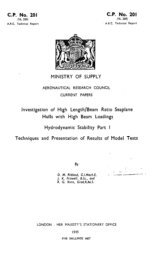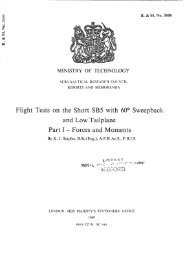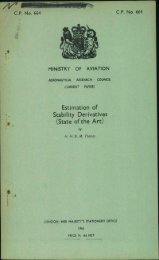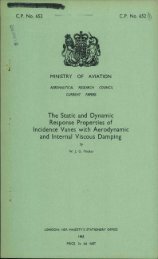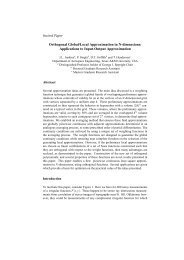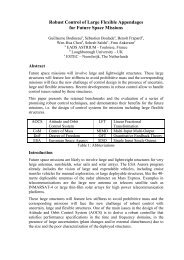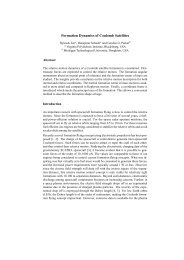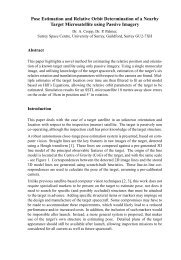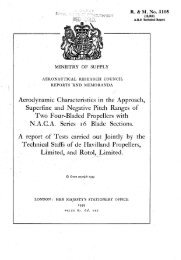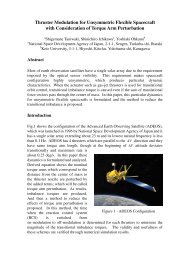The Prediction of Helicopter Rotor Hover Performance using a ...
The Prediction of Helicopter Rotor Hover Performance using a ...
The Prediction of Helicopter Rotor Hover Performance using a ...
You also want an ePaper? Increase the reach of your titles
YUMPU automatically turns print PDFs into web optimized ePapers that Google loves.
<strong>The</strong> new value <strong>of</strong> the momentum downwash velocity w. is found by solving<br />
equations (3) and (4), and is not to be confused with the initial momentum<br />
downwash used in the definition <strong>of</strong> the interference velocity.<br />
<strong>The</strong>re will be exact agreement between the thrust from momentum theory and<br />
strip element theory when equations (3) and (4) are equal, i.e. when<br />
8-rrr. (3. + .)be.<br />
PC<br />
i j - i .<br />
cos (3. + .) - Cn<br />
l i JJ.<br />
sin (3. + .)'<br />
2T " 1<br />
l i<br />
= 0 . (5)<br />
' IN<br />
<strong>The</strong> value <strong>of</strong> cj>. can be found from this equation by an iterative solution<br />
since the aer<strong>of</strong>oil lift and drag coefficients now depend on both 3- and . .<br />
<strong>The</strong> local blade angle <strong>of</strong> incidence is<br />
a. = eR + e. - (B. • •.)<br />
but the collective pitch is not the same as in the initial calculation without<br />
the interference velocities since it is adjusted so that the total rotor thrust<br />
is the same in both cases.<br />
<strong>The</strong> total downwash velocity distribution along the blade u. , now<br />
becomes, in the conventional sense<br />
2 . 3 <strong>The</strong> wake geometry<br />
u. = - fir. (tan 3- + tan d>. )<br />
I 1 1 r i<br />
<strong>The</strong> most comprehensive investigation <strong>of</strong> the wake geometry from a hovering<br />
rotor is that reported by Landgrebe in Ref.5. Tests were made on model rotors<br />
with up to eight blades with varying twist, aspect ratio and rotational speed,<br />
over a range <strong>of</strong> thrust levels up to blade stall. Overall thrust and power was<br />
measured, and the wake made visible by injecting smoke from a rake. A set <strong>of</strong><br />
parameters relating the wake geometry to the rotor thrust coefficient, solidity,<br />
and blade twist was obtained from photographs taken <strong>of</strong> the wake against a<br />
reference grid. <strong>The</strong>se parameters or coefficients allow a wake to be quickly<br />
established for any given rotor conditions. Comparisons <strong>of</strong> the wake generated<br />
by this method show good agreement with measurements made on wakes from full<br />
scale rotors and those predicted by some 'free wake' calculations.



